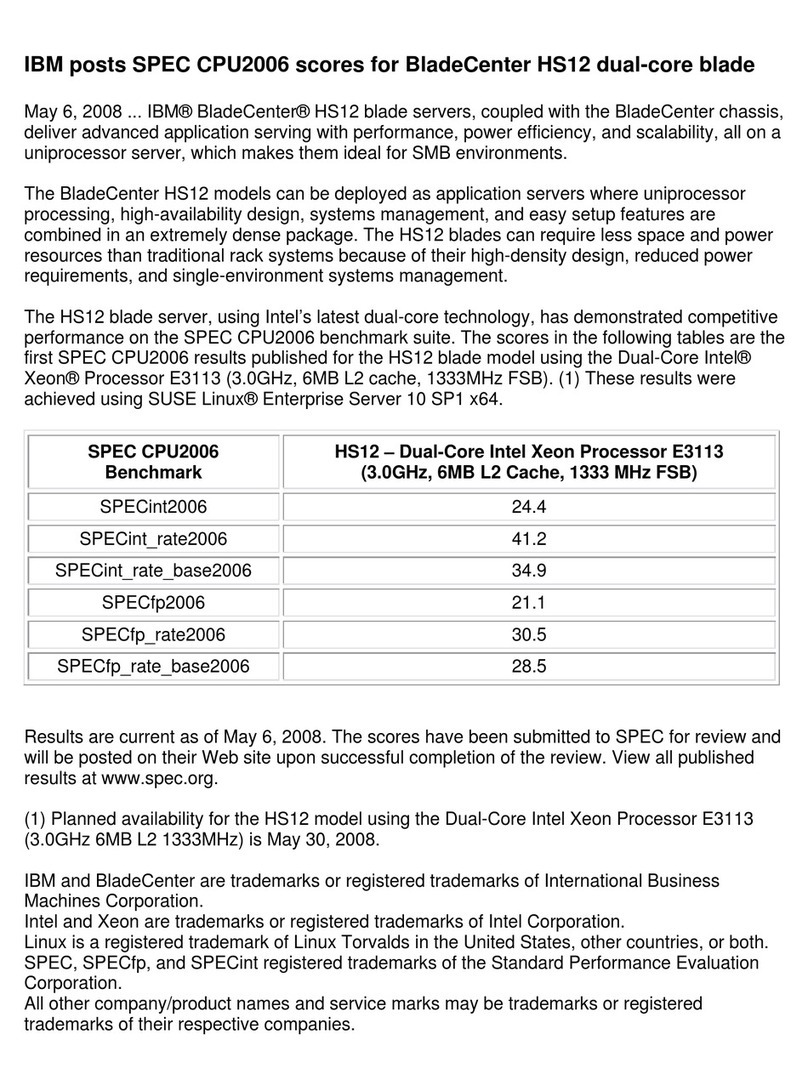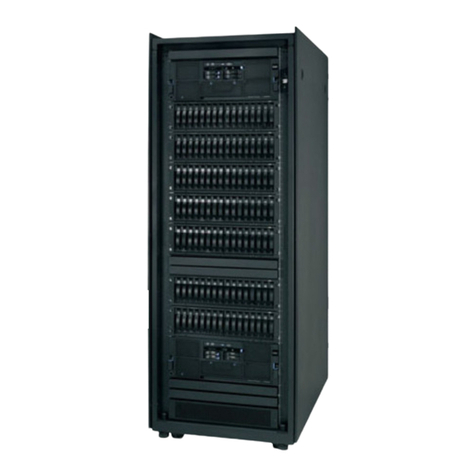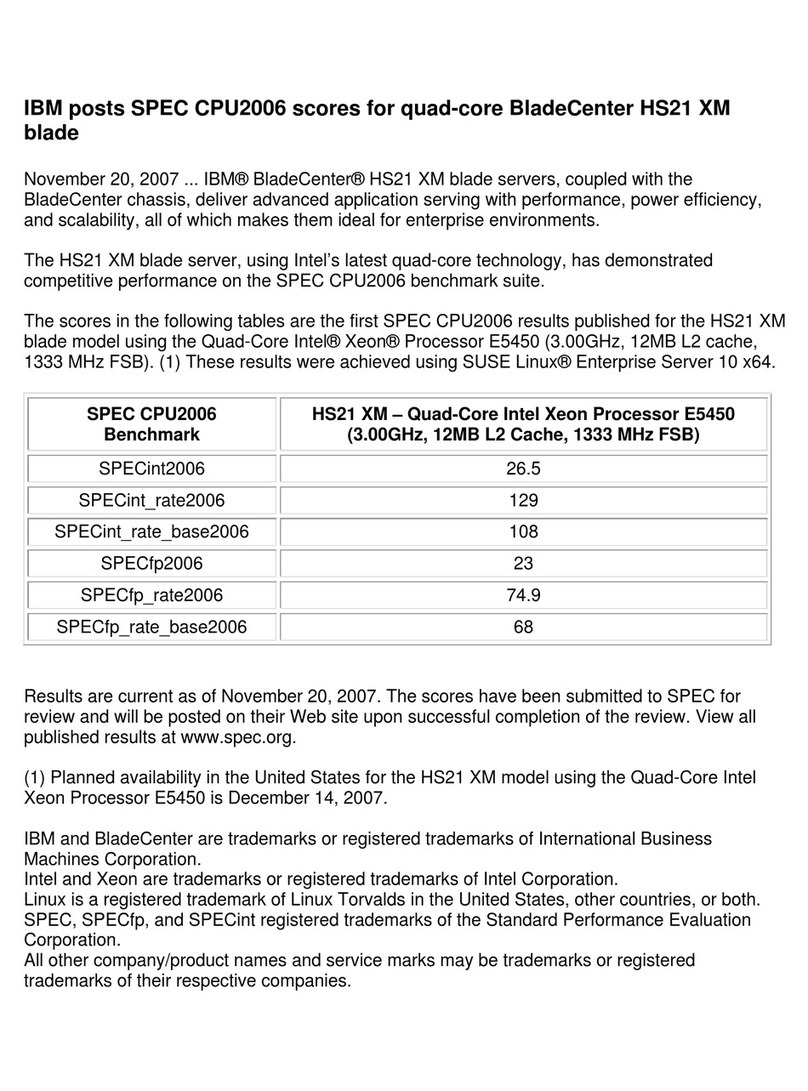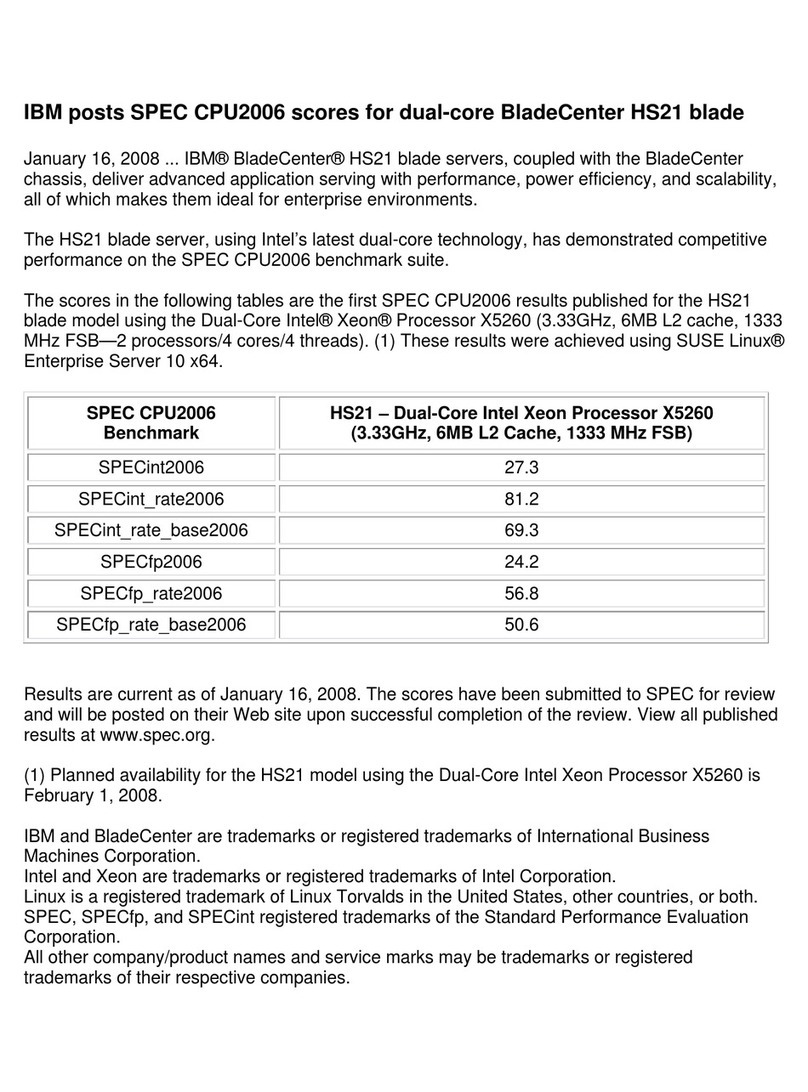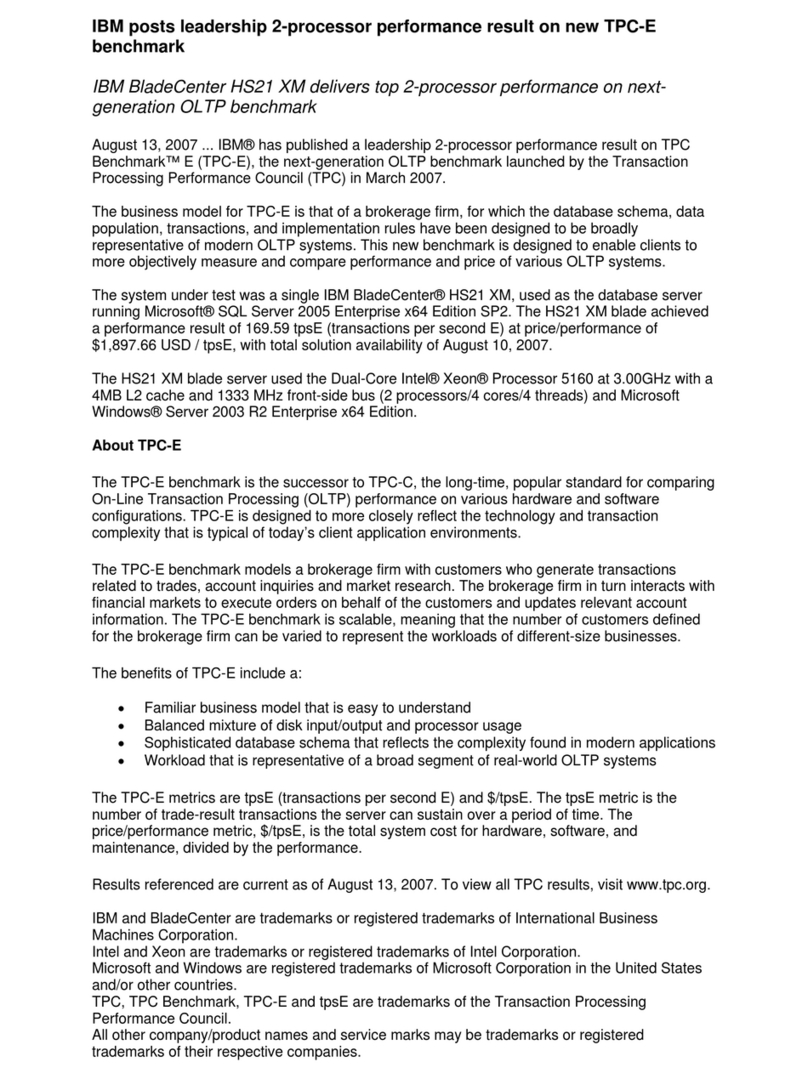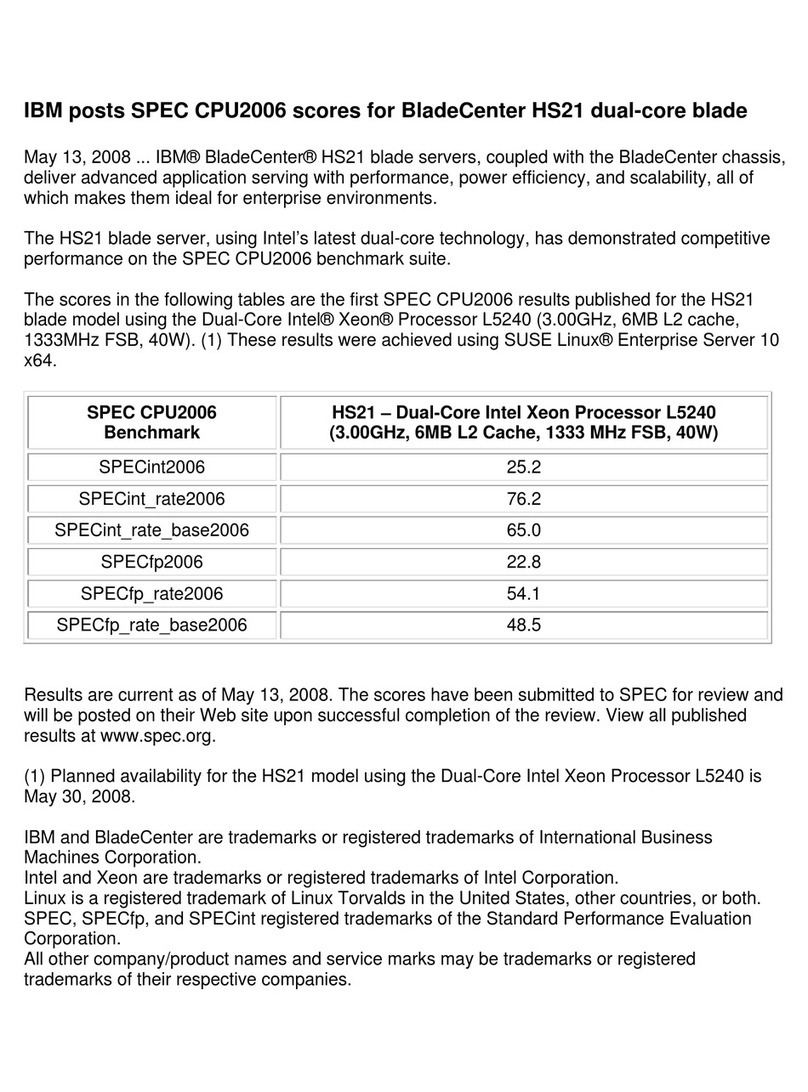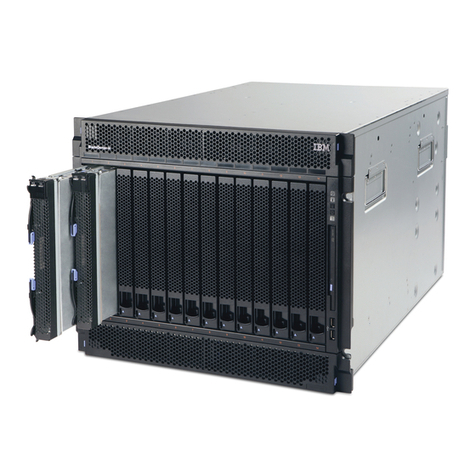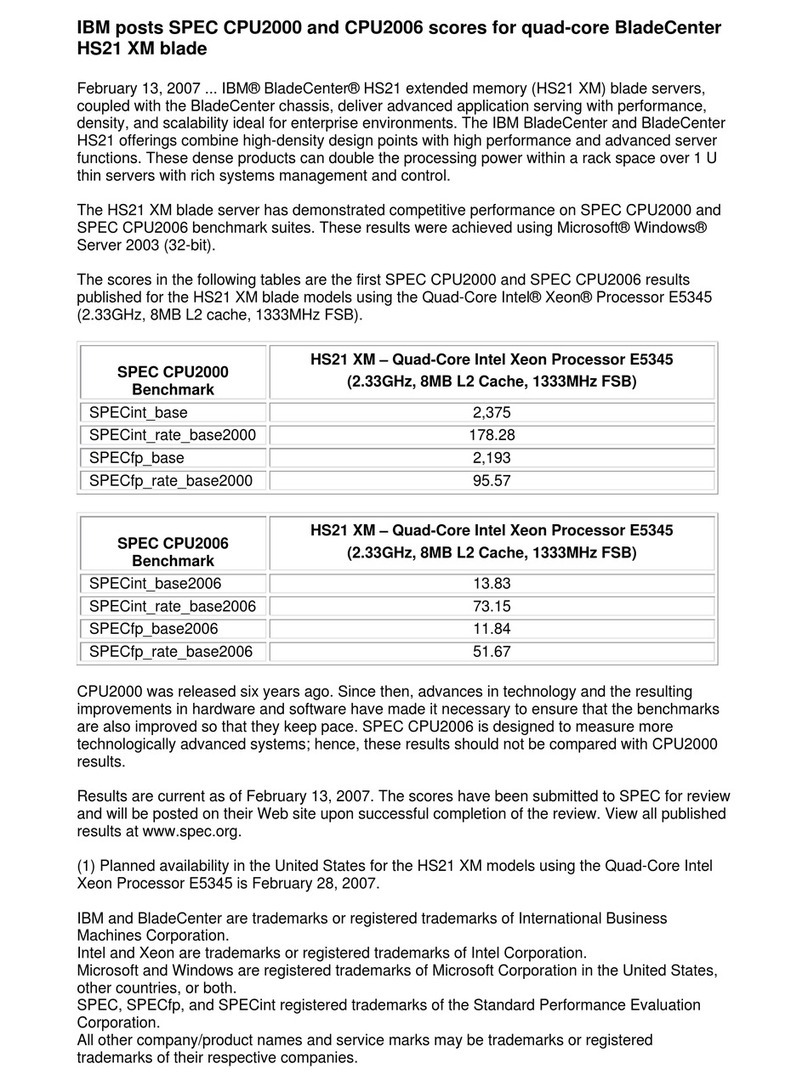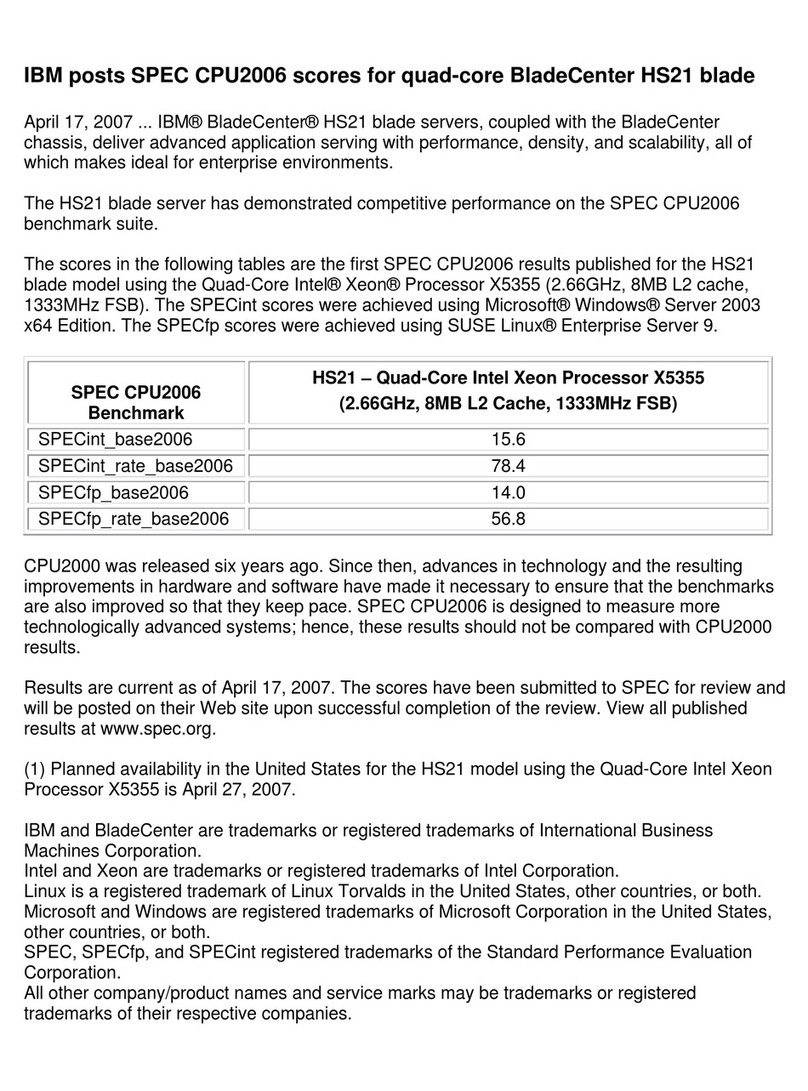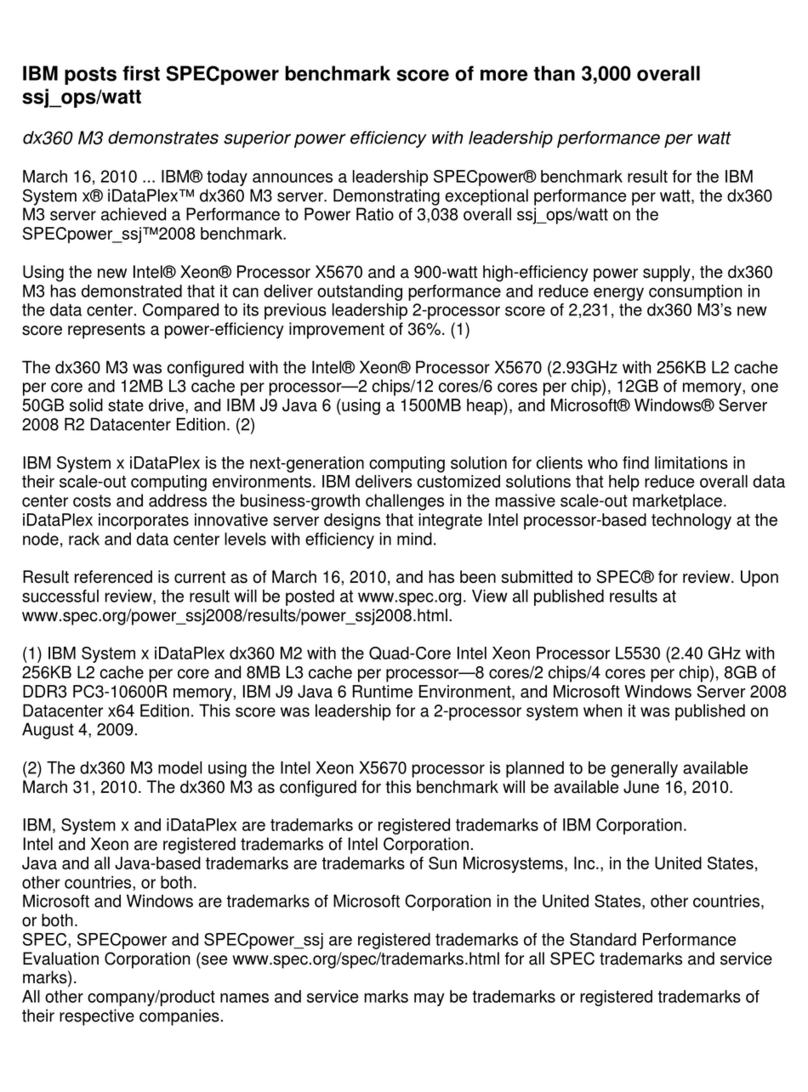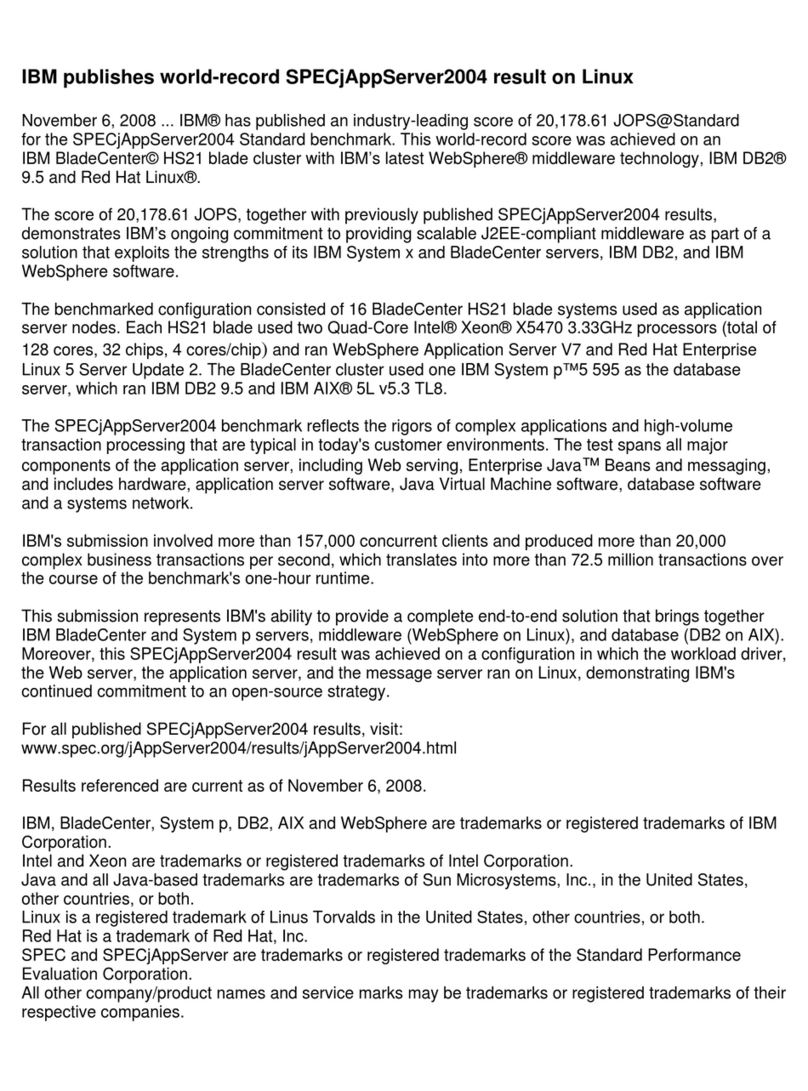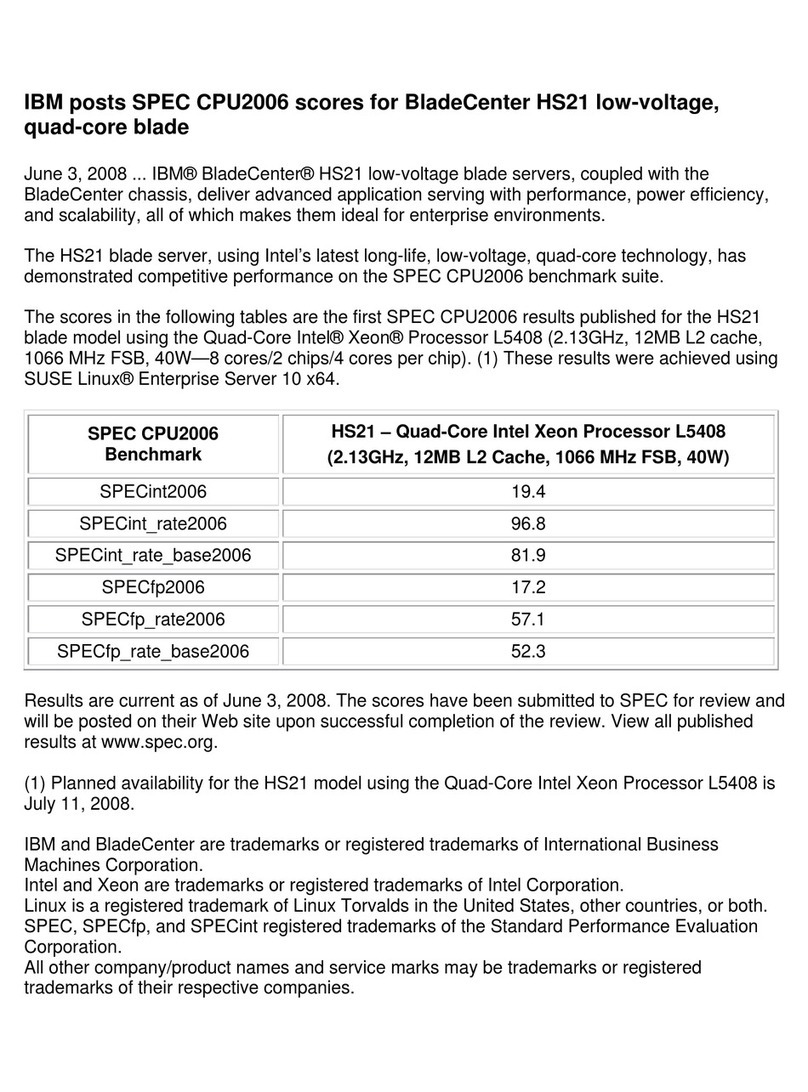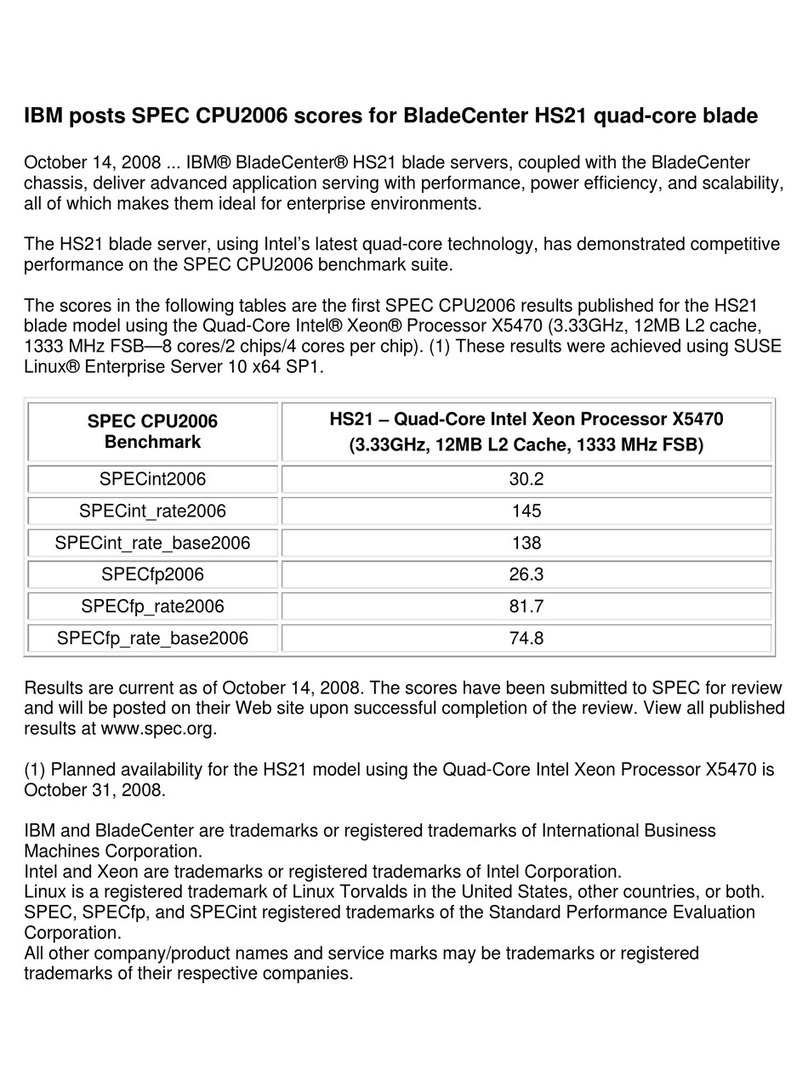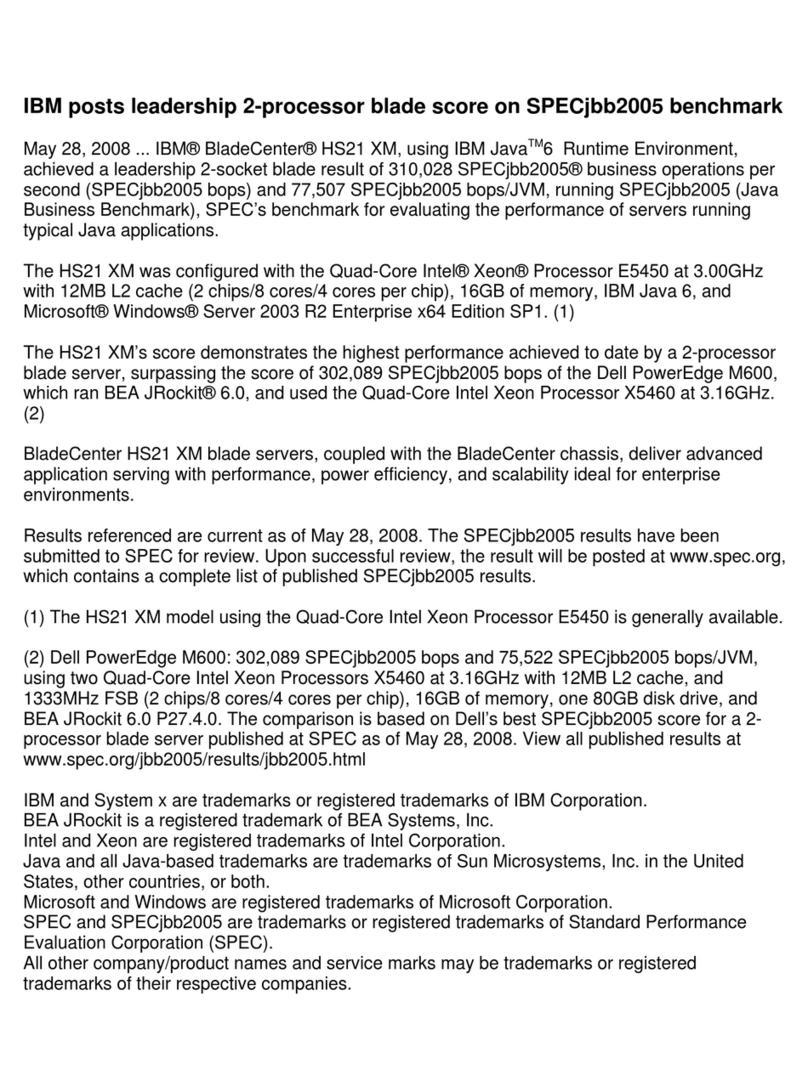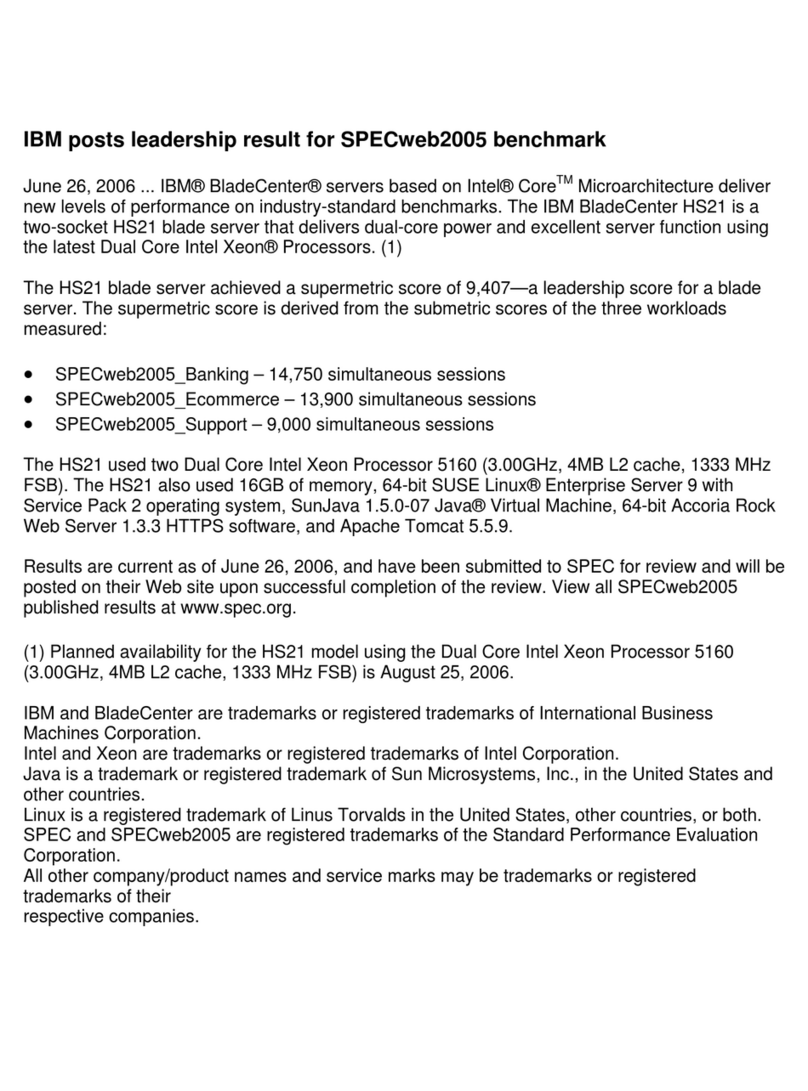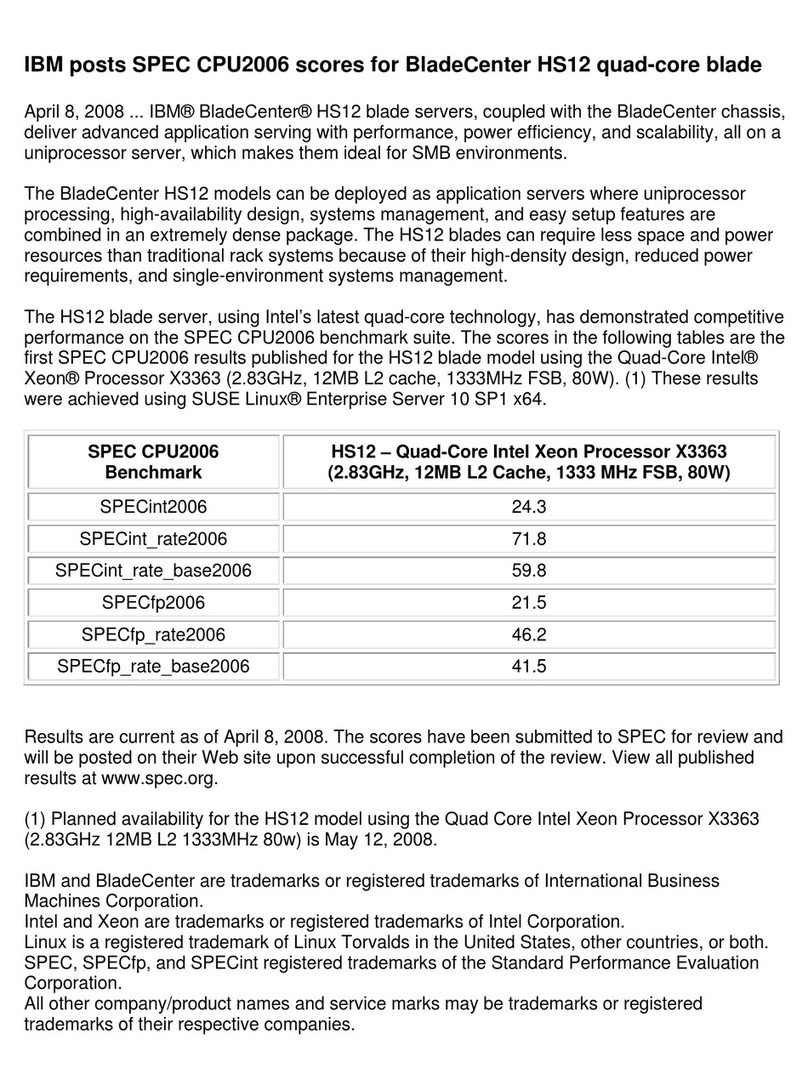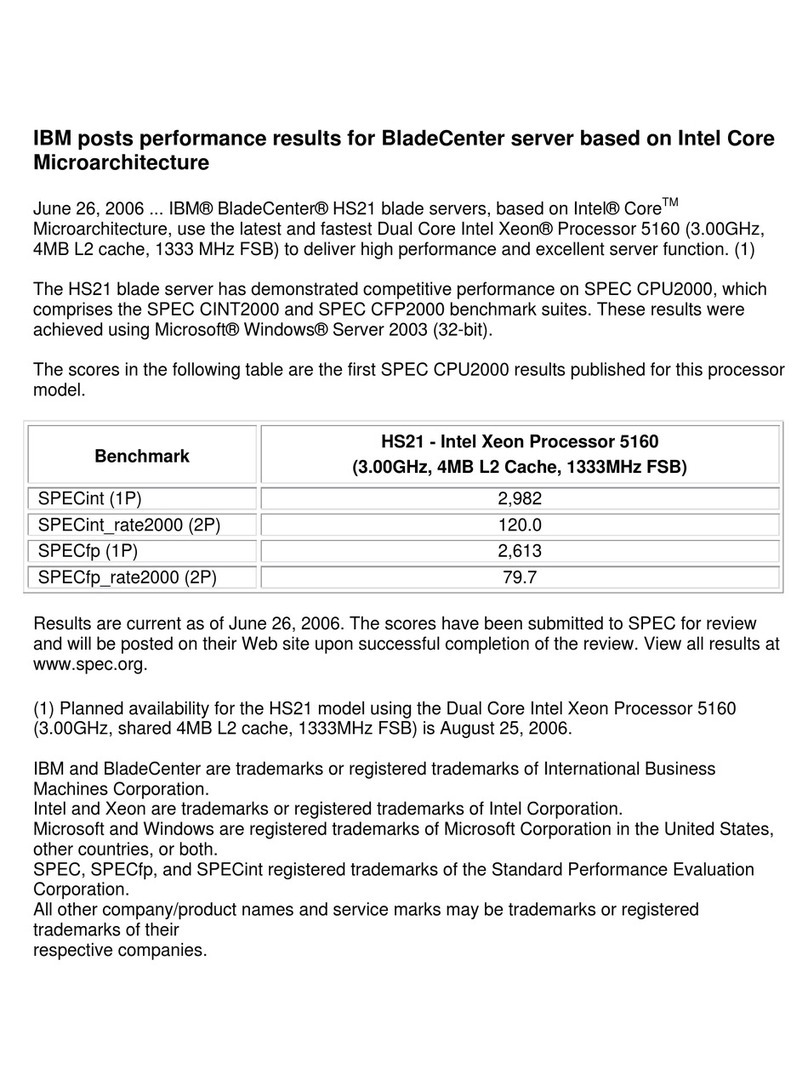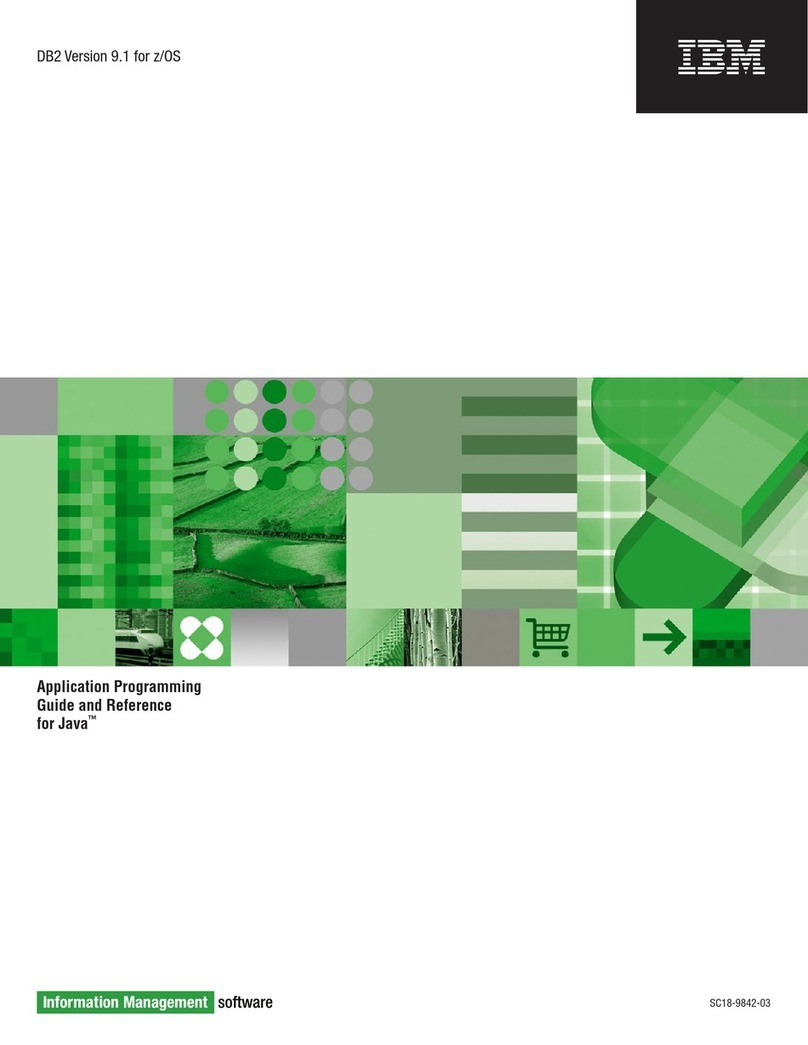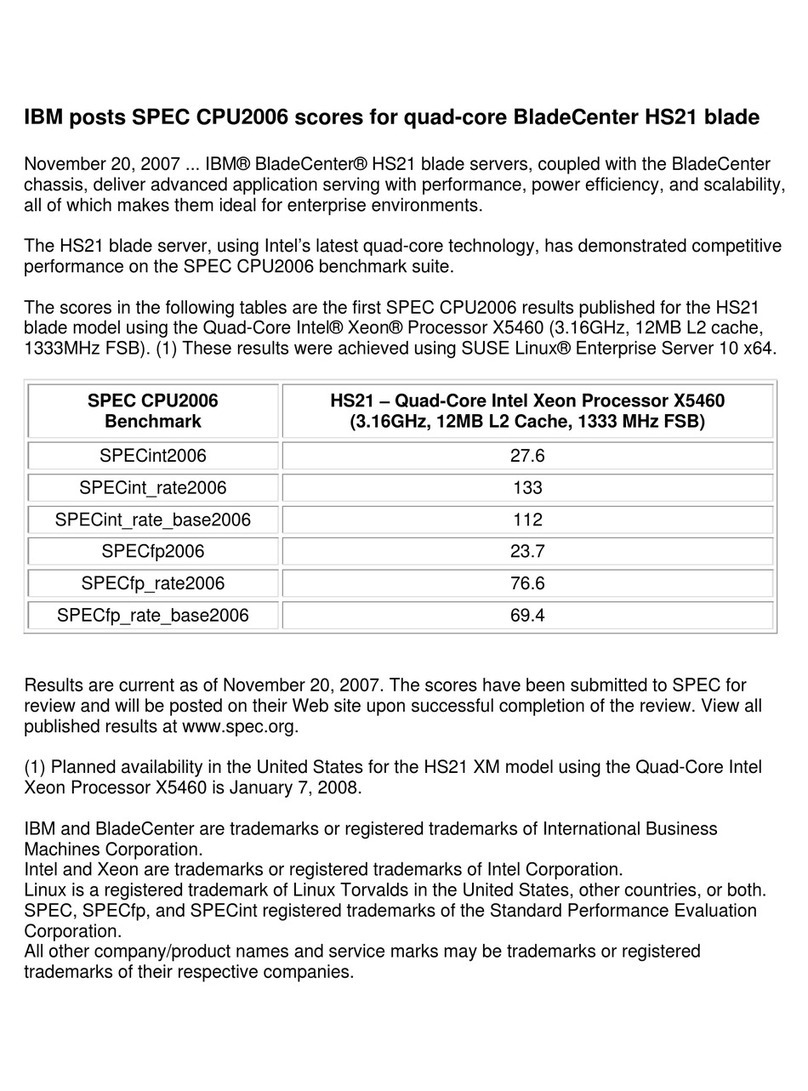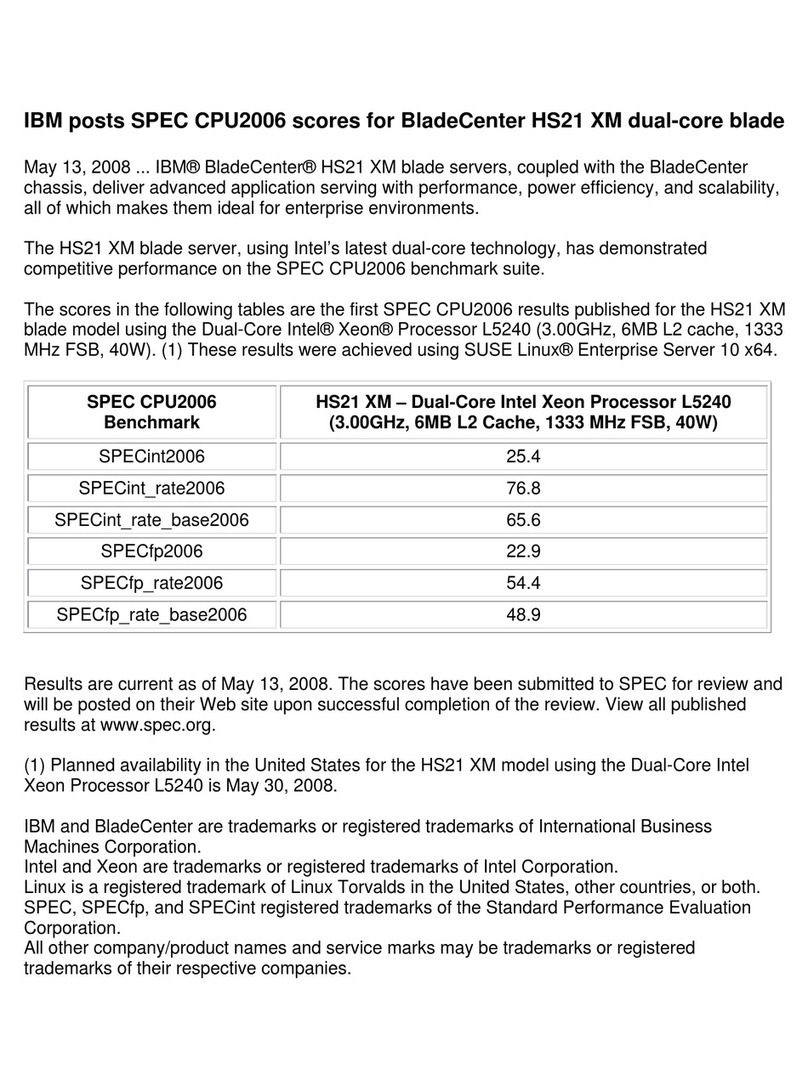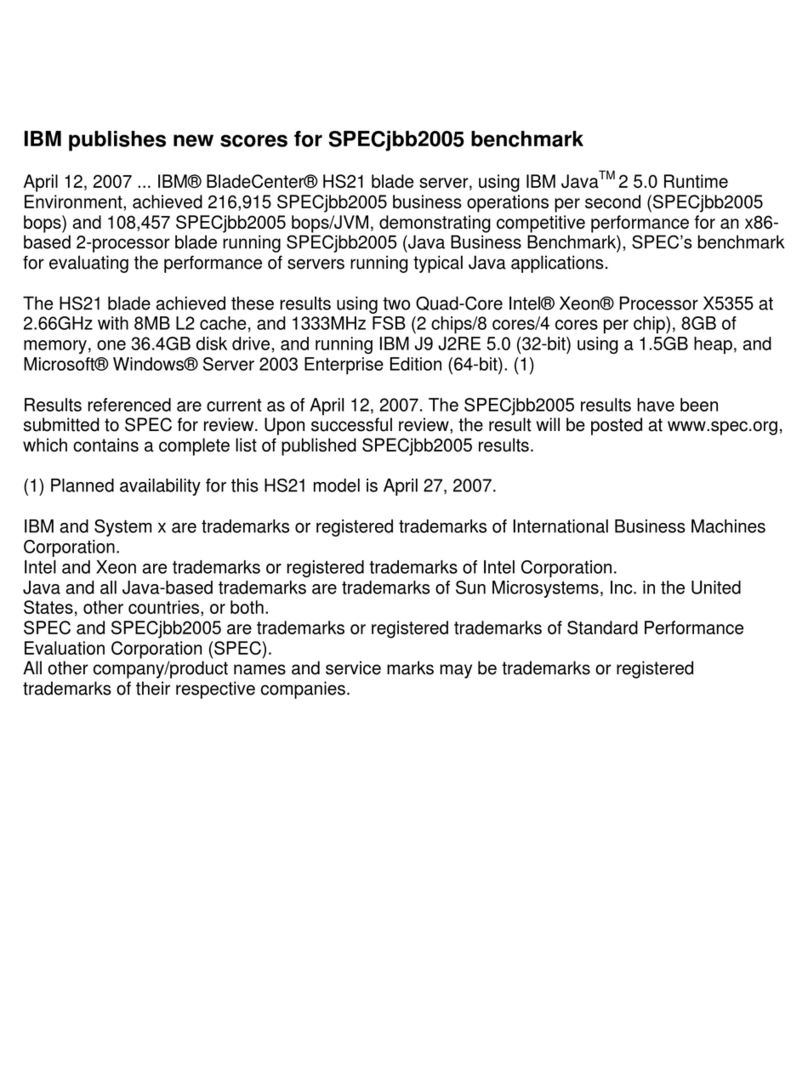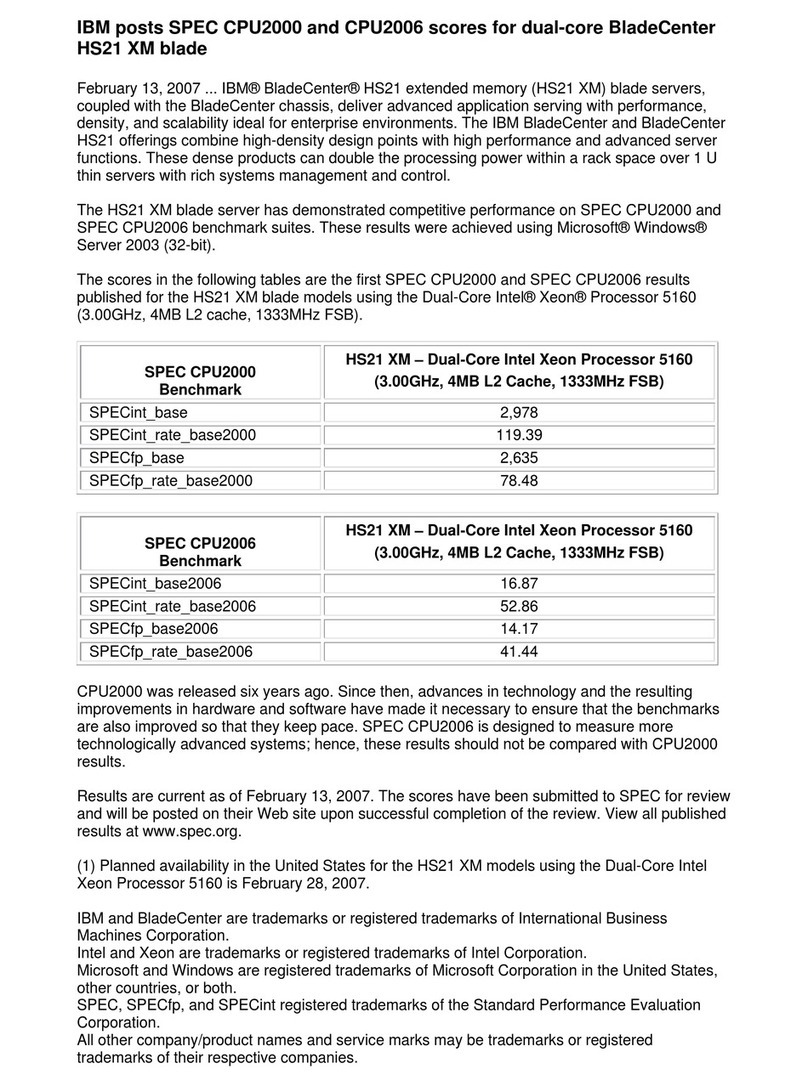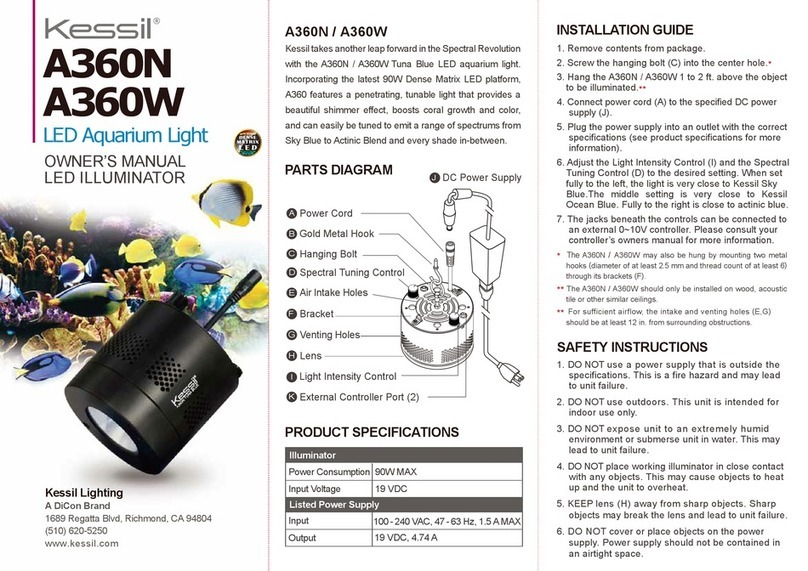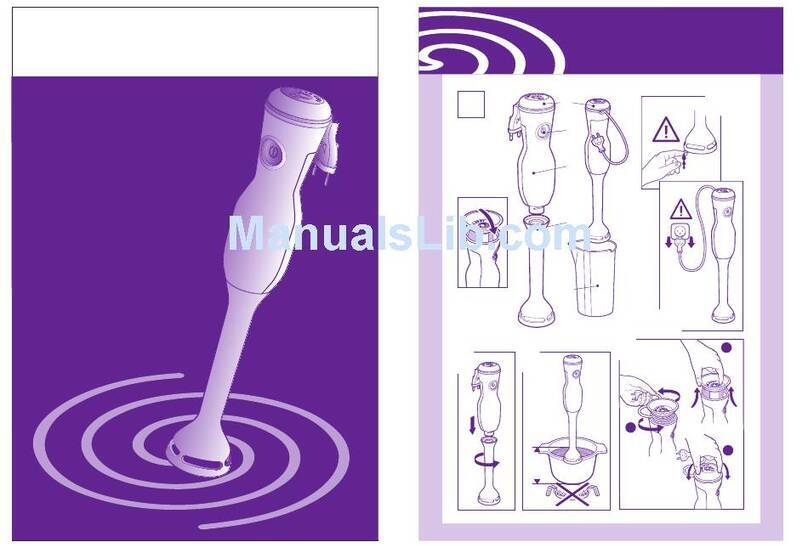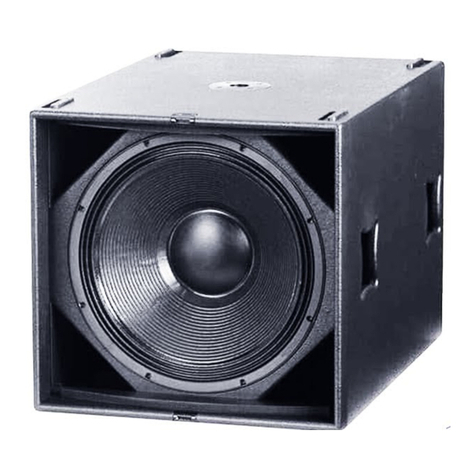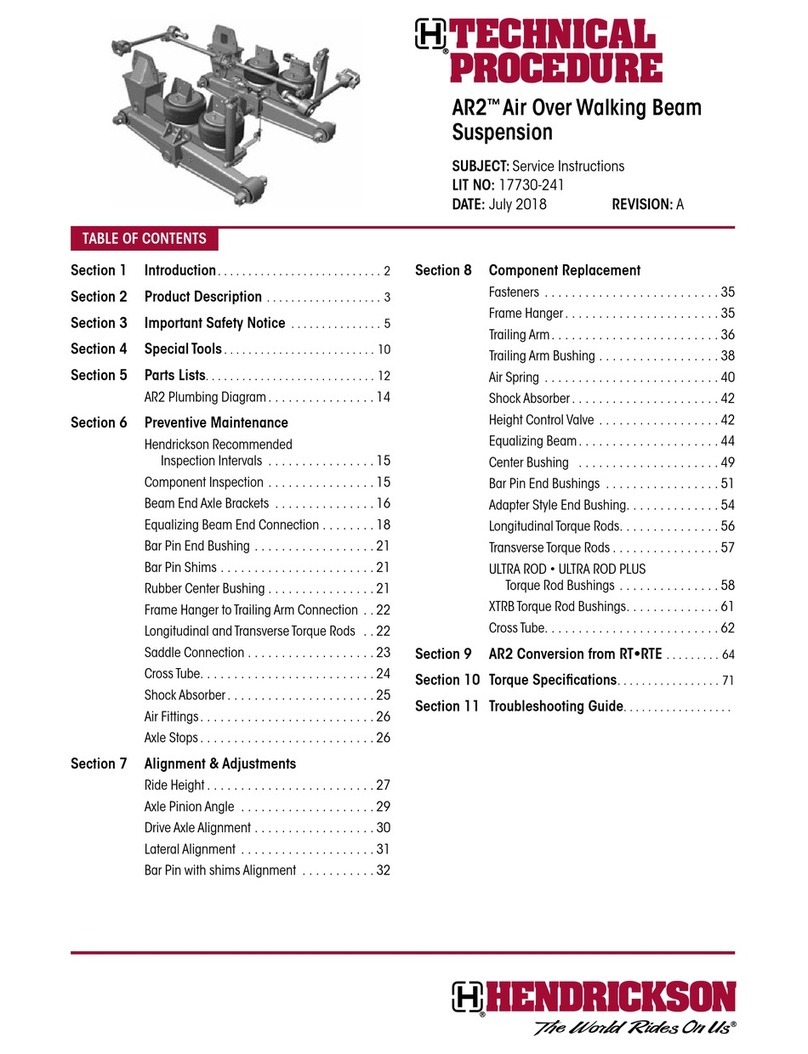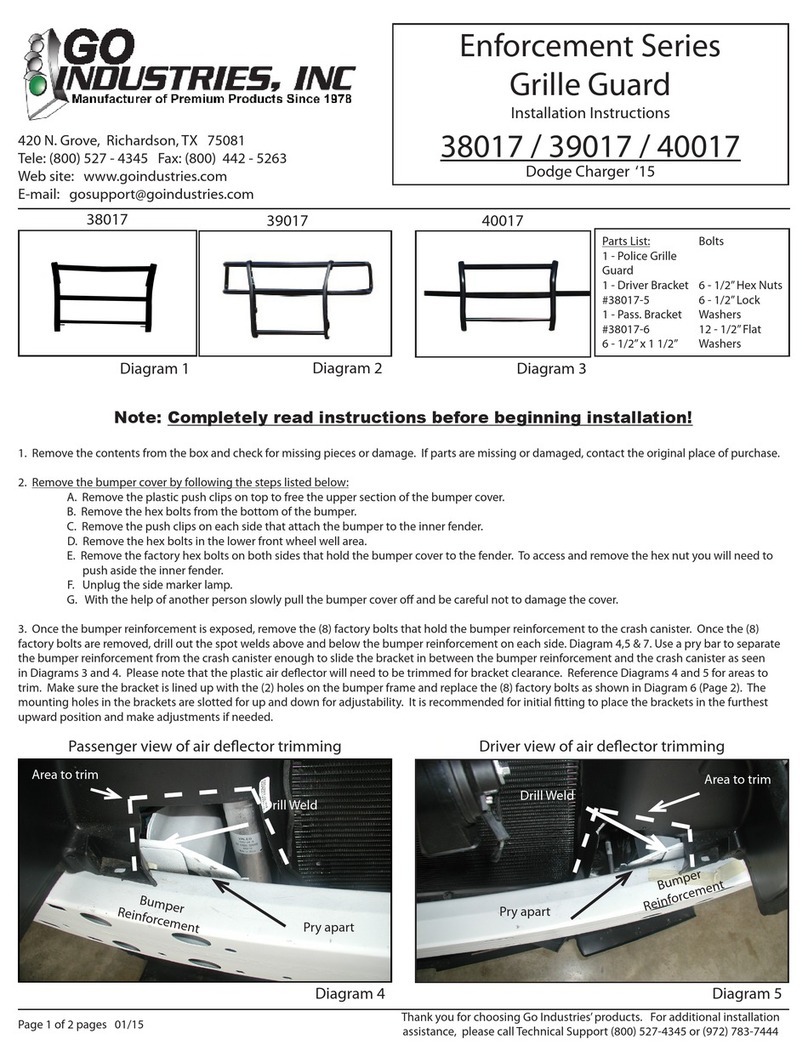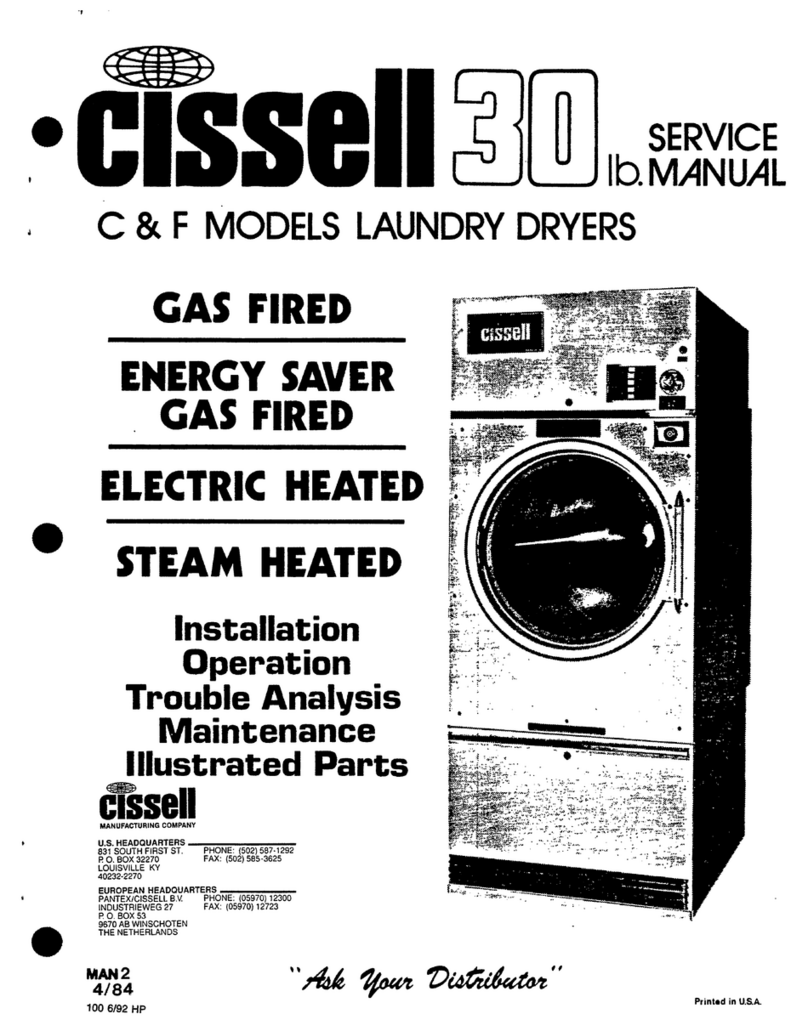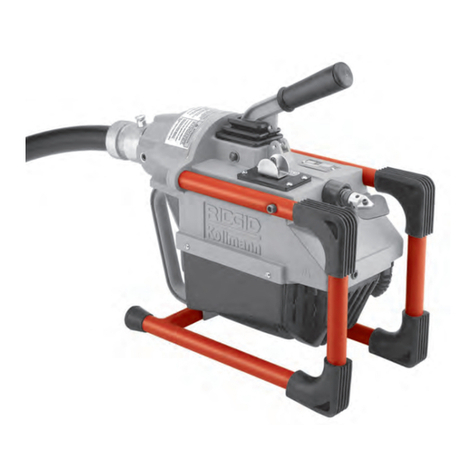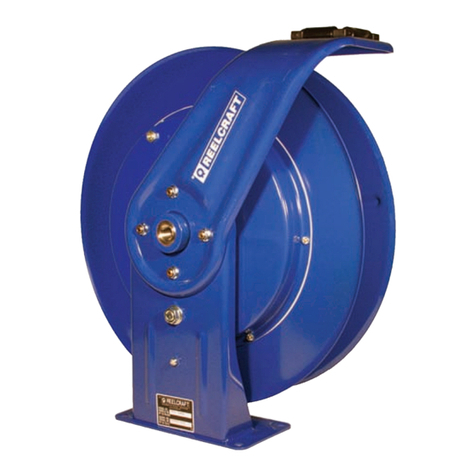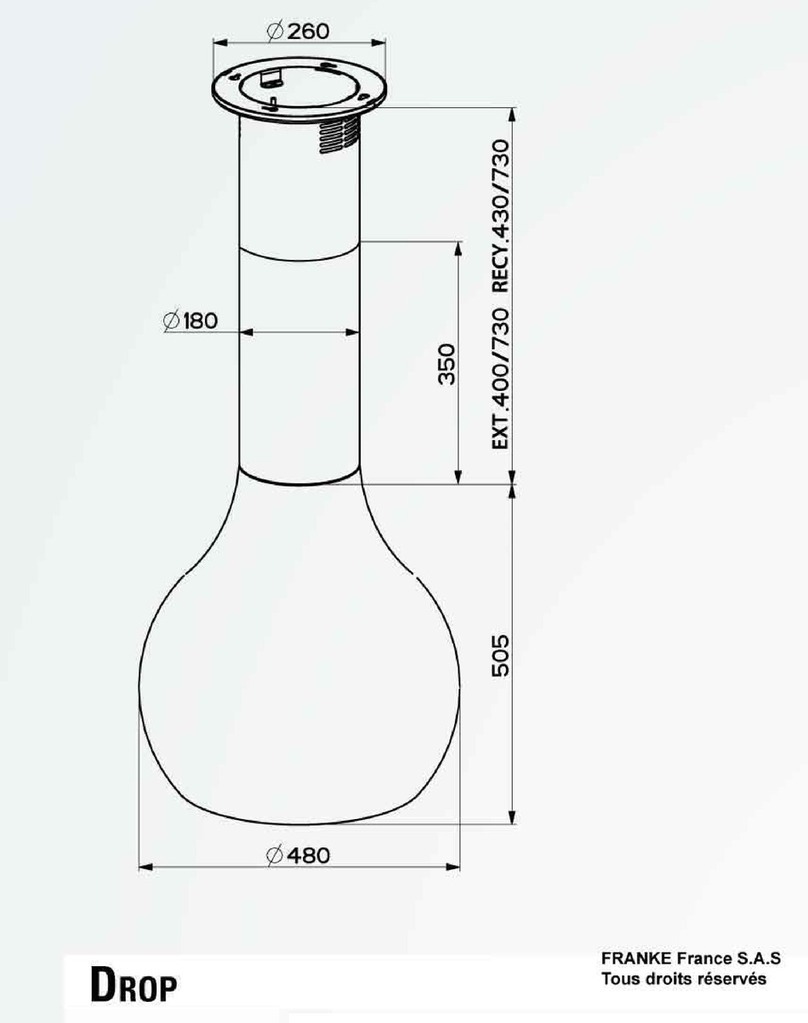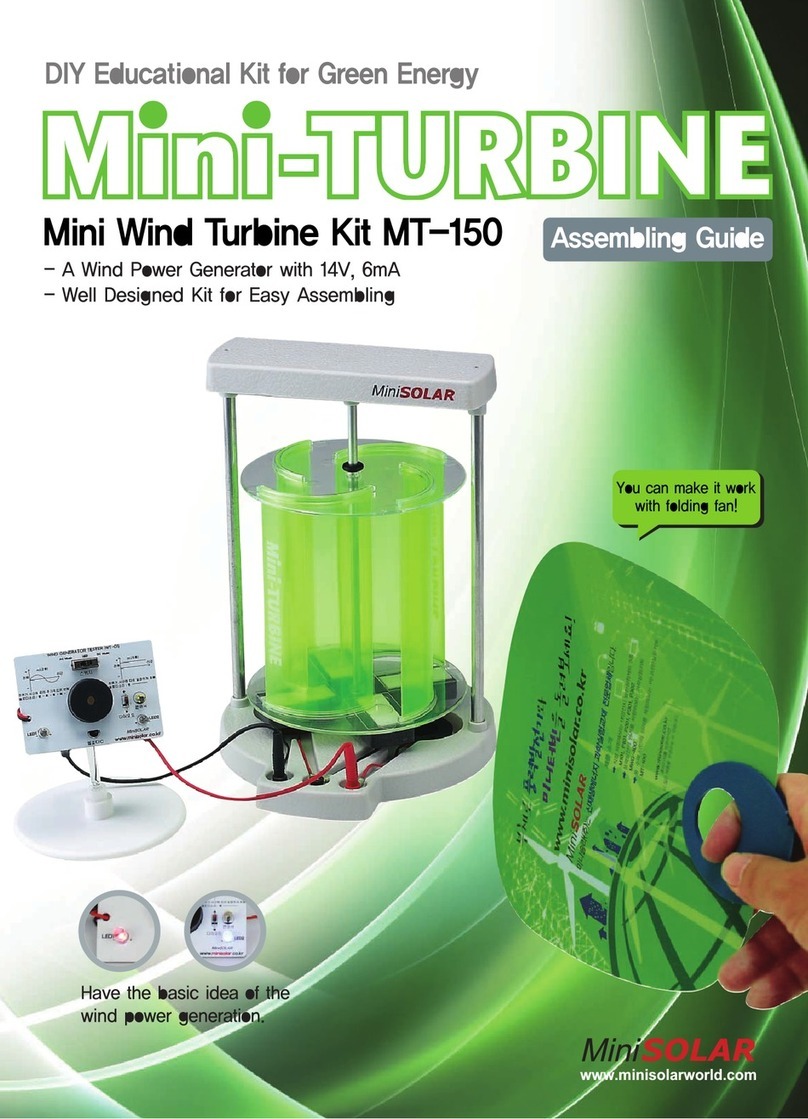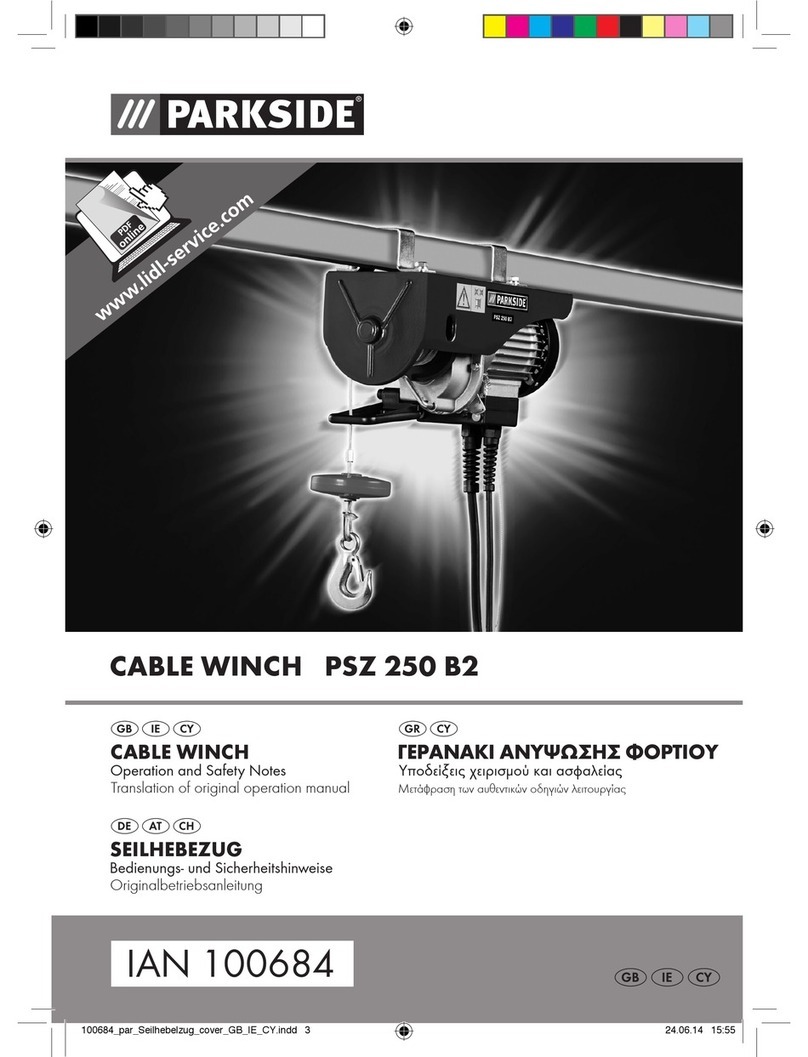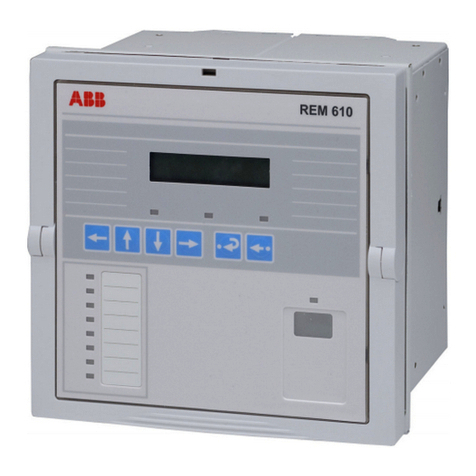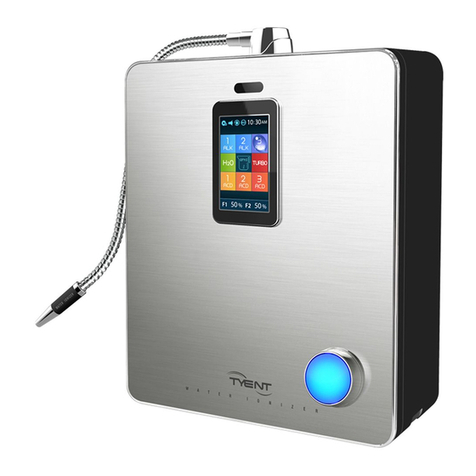
“Equally, in terms of energy efficiency, the System z not only enables cost
savings—it also helps us reduce our impact on the environment. We take a lot of
pride in being good corporate citizens, so anything we can do to make the organi-
zation more sustainable is a major benefit.”
Looking to the future
In mid-2009, BCBSM migrated its database to DB2 version 9, and upgraded its
hardware platform to z10™ Enterprise Class. The new, more powerful z10 quad-
core processors should deliver a considerable improvement in performance, help-
ing the organization handle its rising application and database workload without
increasing hardware licensing costs.
“From every perspective, running applications under Linux on System z makes
sense for our organization,” concludes Ted Mansk. “Performance, reliability,
disaster recovery, server provisioning and cost efficiency have all seen dramatic
improvements—helping BCBSM deliver better service and better value to its mem-
bers across the state.”
For more information
Contact your IBM sales representative or IBM Business Partner. Visit us at:
ibm.com/systems/z
© Copyright IBM Corporation 2009
IBM Systems and Technology Group
Route 100
Somers, NY 10589
U.S.A.
Produced in the United States of America
March 2009
All Rights Reserved
IBM, the IBM logo, ibm.com and System z
are trademarks or registered trademarks of
International Business Machines Corporation in
the United States, other countries, or both. If
these and other IBM trademarked terms are
marked on their first occurrence in this
information with a trademark symbol (® or ™),
these symbols indicate U.S. registered or
common law trademarks owned by IBM at the
time this information was published. Such
trademarks may also be registered or common
law trademarks in other countries. A current list
of IBM trademarks is available on the Web at
“Copyright and trademark information” at
ibm.com/legal/copytrade.shtml.
Intel is a trademark or registered trademark
of Intel Corporation or its subsidiaries in the
United States and other countries.
Linux is a registered trademark of Linus Torvalds
in the United States, other countries, or both.
Microsoft and Windows are trademarks of
Microsoft Corporation in the United States,
other countries, or both.
UNIX is a registered trademark of The Open
Group in the United States and other countries.
Other product, company or service names may
be trademarks or service marks of others.
References in this publication to IBM products,
programs or services do not imply that
IBM intends to make these available in all
countries in which IBM operates. Any reference
to an IBM product, program or service is not
intended to imply that only IBM’s product,
program or service may be used. Any
functionally equivalent product, program or
service may be used instead. Offerings are
subject to change, extension or withdrawal
without notice.
All client examples cited represent how some
clients have used IBM products and the results
they may have achieved. Performance data for
IBM and non-IBM products and services
contained in this document was derived under
specific operating and environmental conditions.
The actual results obtained by any party
implementing such products or services will
depend on a large number of factors specific to
such party’s operating environment and may
vary significantly. IBM makes no representation
that these results can be expected or obtained
in any implementation of any such products or
services.
THE INFORMATION IN THIS DOCUMENT IS
PROVIDED “AS-IS” WITHOUT ANY
WARRANTY, EITHER EXPRESSED OR
IMPLIED.
ZSC03049-USEN-00
